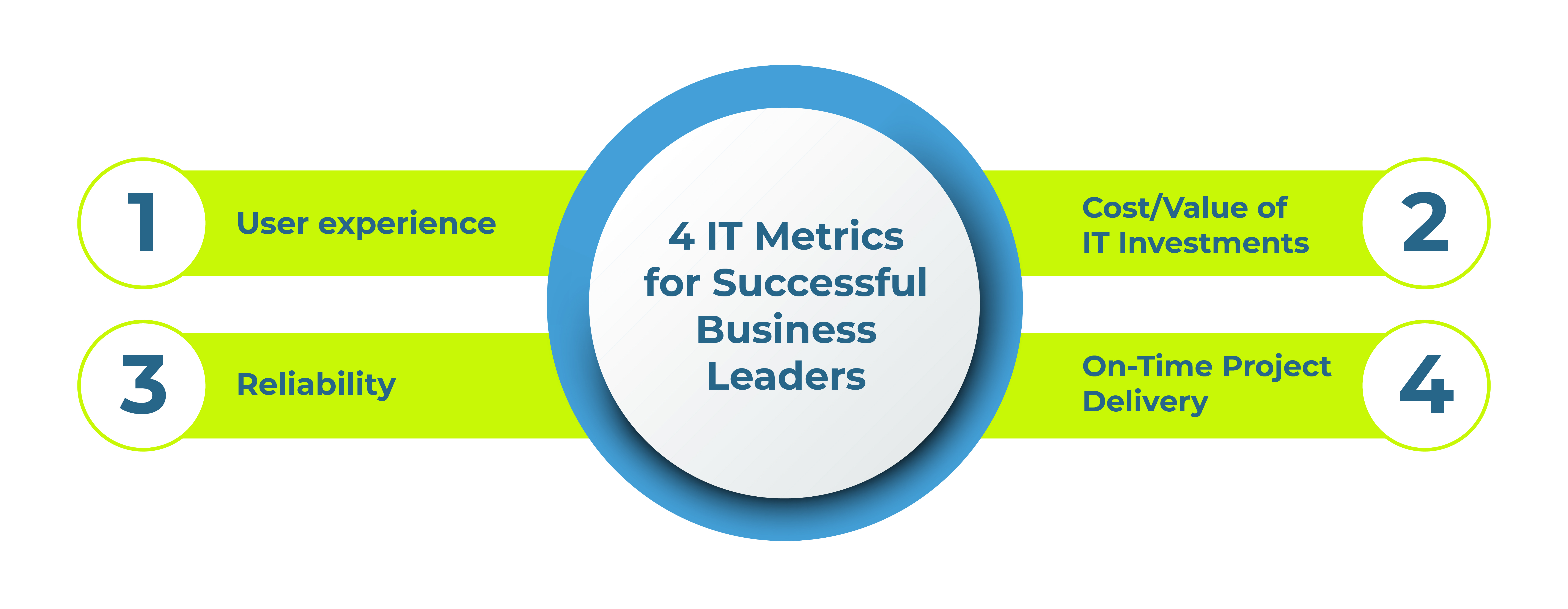As you digitise your business operations and build a centralised system to manage day-to-day business activities, tracking the performance of your IT systems becomes essential for business growth. That’s because you can’t get valuable technical advice for your company without visibility into your processes. And, the only way to achieve it is to keep an eye on IT metrics that enable you to measure your IT efforts and the return on your investment.
Gone are the days when your IT department would only measure KPIs and deliver reports for accounting, project management, or supply chain operations. Now, a successful company sets clear KPIs for the IT department to ensure that things run smoothly right where all other business processes and workflows connect.
With that in mind, let’s see four key IT metrics that successful business leaders track to make their businesses function better overall.
1. User Experience
The ultimate purpose of any IT investment is to streamline processes and make the work easier for your employees to focus on core activities and be more productive. It means that providing an excellent user experience for your team members must become a top priority in 2022 and beyond.
IT departments run smoothly when users are confident with their tools and happy with the results. When people on your team don’t need to open a new ticket, everyone can focus on their tasks. Furthermore, focusing on the human experience will accelerate tech adoption and reduce costs.
So, how can you measure user experience? The first place to look for answers is the number of tickets your users open, but this IT metric alone can only tell you so much. You want to look beyond the number to see what problems your staff encounters and identify the causes behind common issues.
You want to double this effort with satisfaction surveys. Ask your users what they like and dislike about their current tools to understand what works and what slows down your employees.
If you wish to improve user experience, it’s best to choose intuitive software and devices and ensure users have access to regular training so they can get the most out of your IT investments right from the start. Skilled personnel at the help desk can also impact ROI and adoption.
2. Reliability
There’s nothing like a good crisis to reveal bottlenecks and barriers to digitisation and productivity. Unfortunately, when most SMEs experience disruption, they fail to understand how interconnected operations are within the company.
Simply put, when your IT system stops, your entire company feels the impact of it.
So, every successful business leader should know how reliable their IT systems are and how fast they can be recovered after an incident, from a simple outage to ransomware attacks to natural disasters.
Measuring reliability can be a challenge because there’s no one-size-fits-all solution to help you with the task. Every company has specific IT needs. What may be considered an acceptable solution in one business domain might not be an effective recovery plan for a similar company in a different industry.
As a guideline, you want to assess your IT assets and determine how old your hardware is and how often the system crashes. If you’ve had incidents in the past, find out:
- How long it took to bring everything back online.
- How much each intervention has cost the company.
- What measures your IT team has taken to prevent similar incidents from happening.
Tested disaster recovery and business continuity plans can increase the reliability of your IT systems and give peace of mind to you and your team. Moreover, as most data recovery needs occur due to hardware failure, you want to invest in reliable hardware to prevent incidents.
At the same time, make sure your IT team constantly updates software and licenses and takes cybersecurity seriously to keep your business and your staff safe online and offline.
3. Cost/Value of IT Investments
The pandemic has probably forced you to make unplanned IT investments to manage remote work and all the challenges it implies. In a post-pandemic scenario, it’s only normal to keep an eye on costs and try to make the most out of your existing infrastructure.
However, you don’t want to remain stuck on plain numbers. When going over your IT budget, look at the actual value each IT investment brings to the table. This way, you better understand how your company functions and identify gaps that, once covered, might increase profitability even further.
To get the context you need for a proper evaluation of costs vs value of IT investments, you want to analyse the impact of your investment. Calculate how your overall costs go down as you digitise your business operations, from operational to customer acquisition costs.
If you want to increase the value of your IT projects, plan them thoroughly and hire a project manager to help you stay on top of every detail and unexpected situation that might show up.
Your partners play a vital role in this process. Whether you hire in-house experts or outsource most of your IT, make sure your IT systems are in good hands.
4. On-Time Project Delivery
According to multiple studies, around 70% of IT projects fail or fall short of their objectives. Some will get delayed due to a series of external factors, which can quickly slow down your progress and increase costs.
Keeping track of how your IT team manages projects and eliminates bottlenecks is crucial to secure project success. So, you want to set milestones and deadlines for every project, regardless of its size or value. This way, you can easily measure on-time project delivery and identify effective methods to improve this metric over time.
One of the easiest ways to keep projects on track or even speed some steps up is by staying in touch with your IT team and making sure everyone is on the same page when it comes to deadlines and objectives. Be clear about your expectations and create an environment that encourages transparency and accountability.
What’s Next?
Don’t wait until the last minute to measure the success of your IT department. The sooner you start evaluating the performance of your IT system, the faster you can get a sense of where your business is at and what needs to be done to align your company with the latest trends in your industry.
The effectiveness of your IT department will dictate the overall performance of your company, so you don’t want things to fix themselves at some point. You want to be proactive and permanently track these four IT metrics to increase efficiency and keep your staff happy and satisfied.


